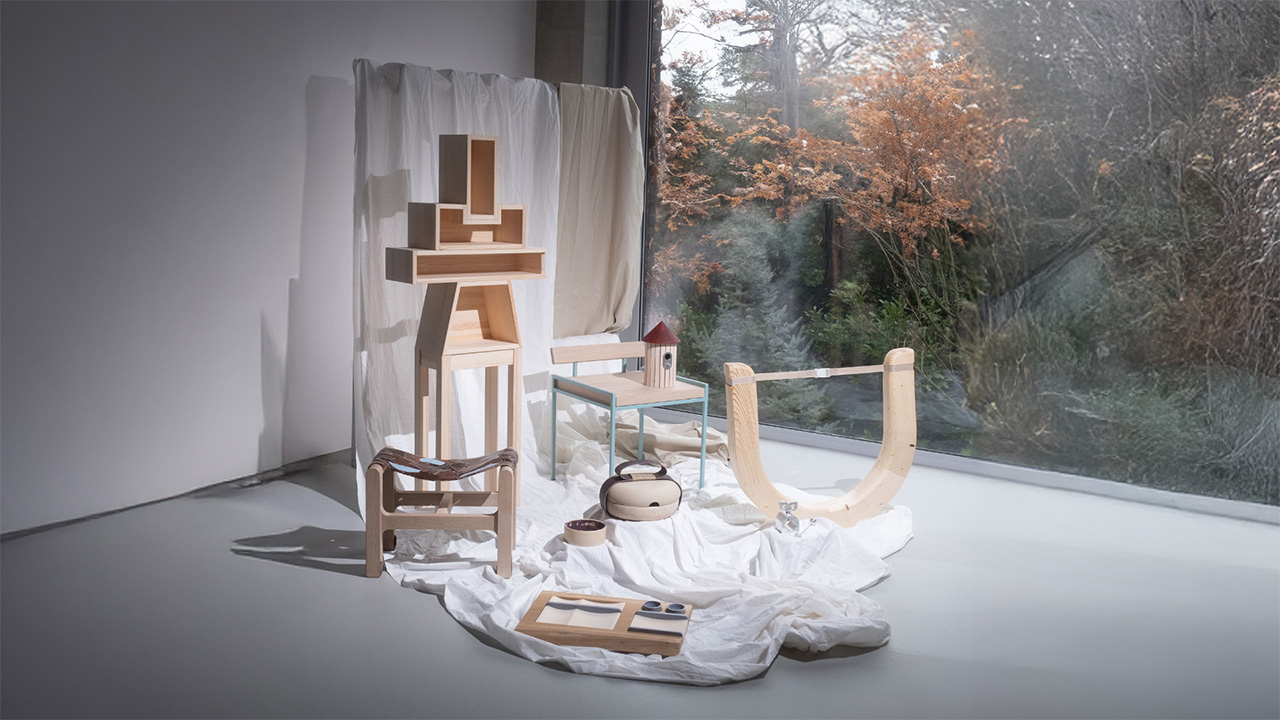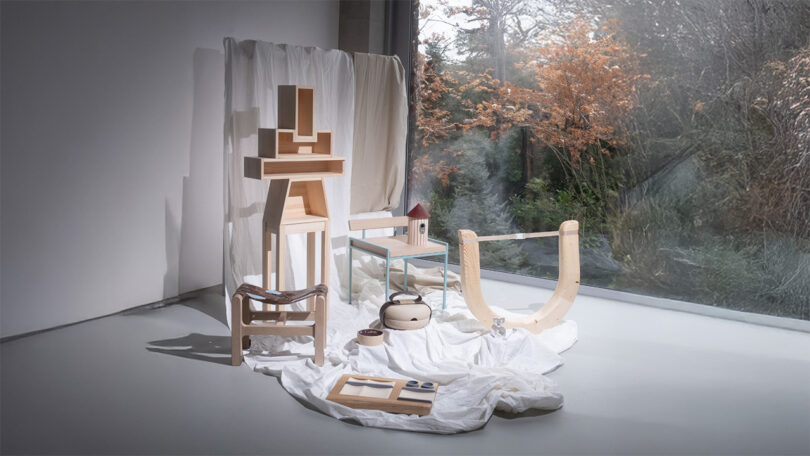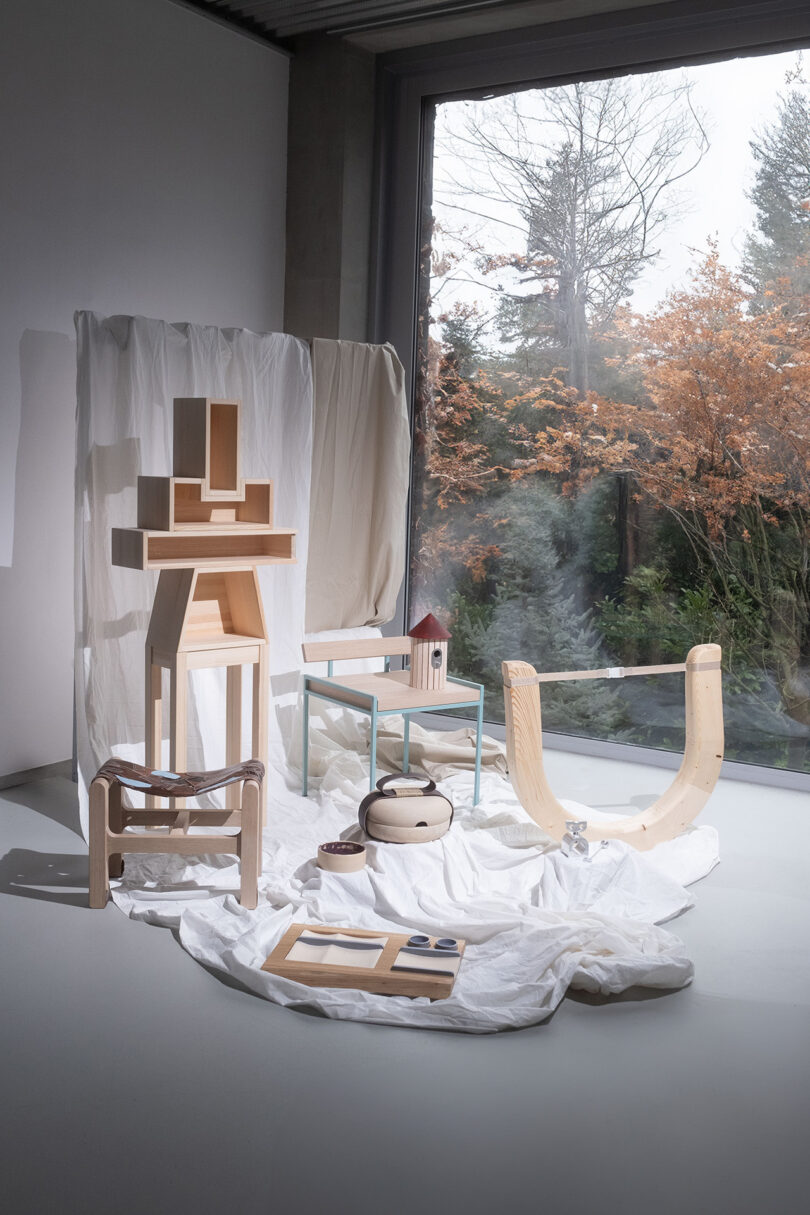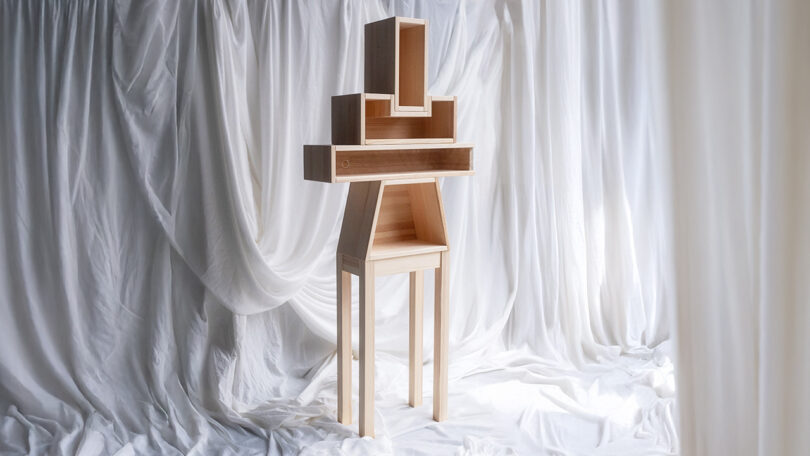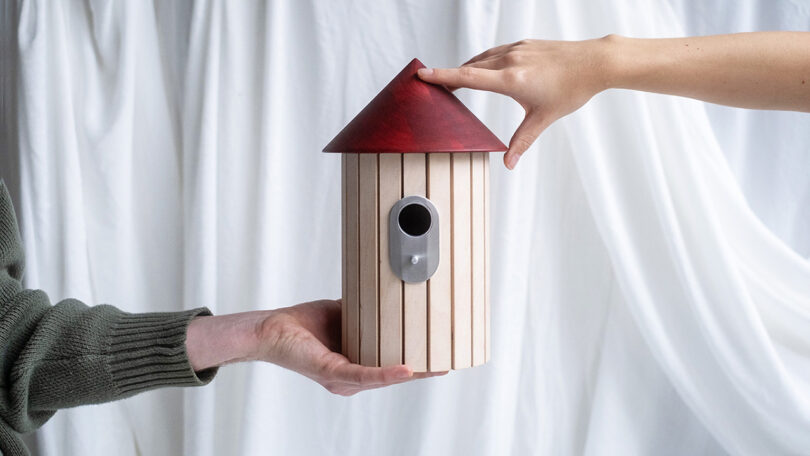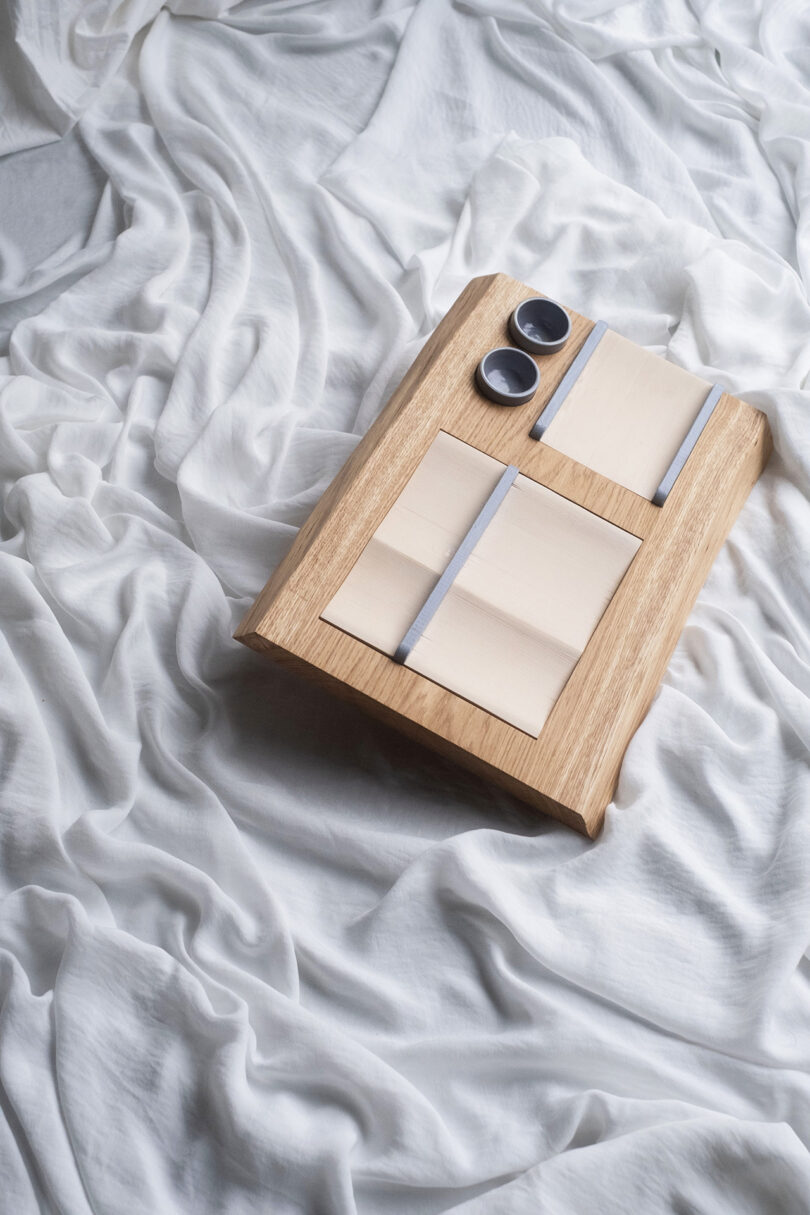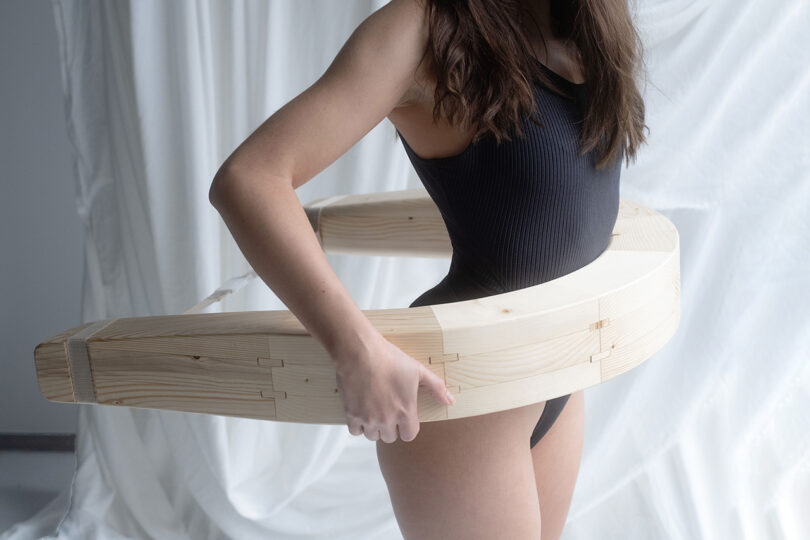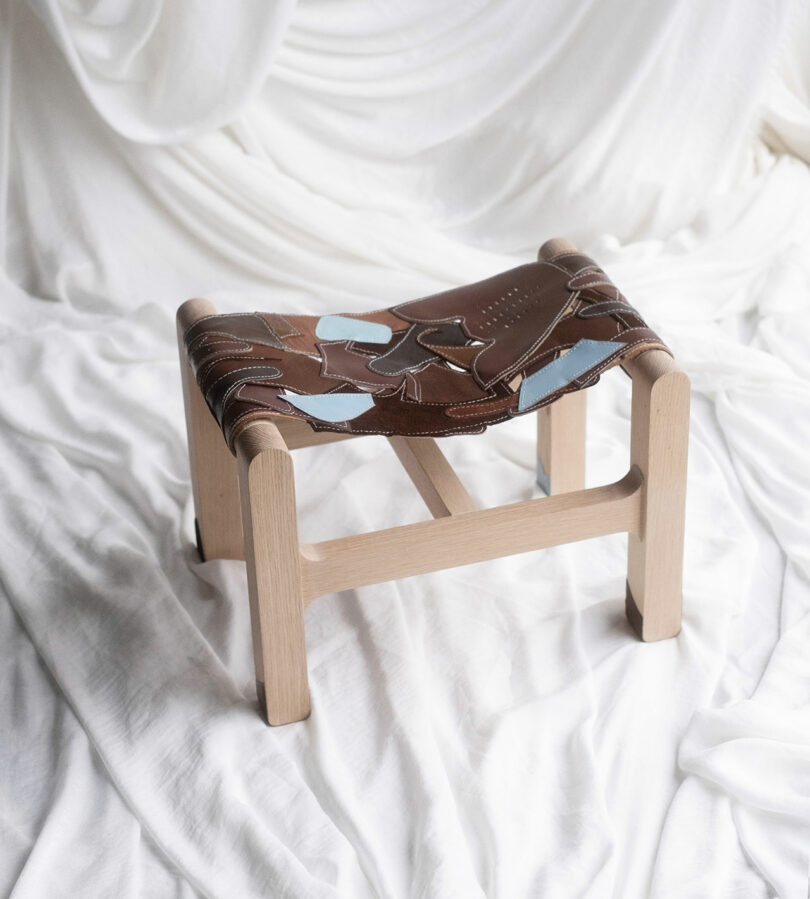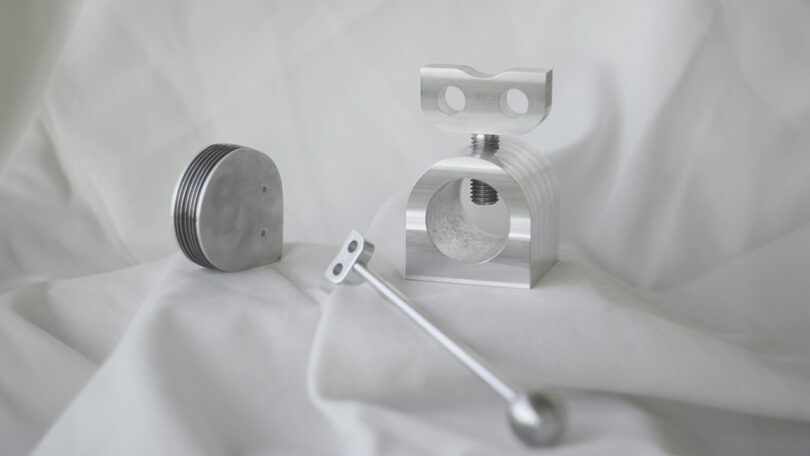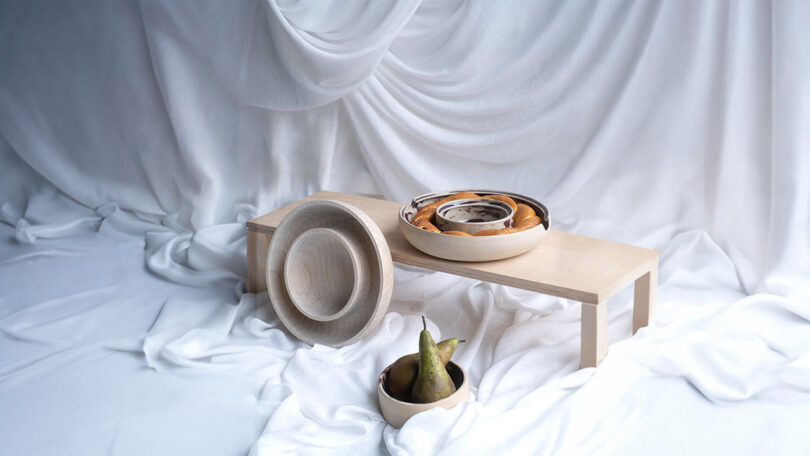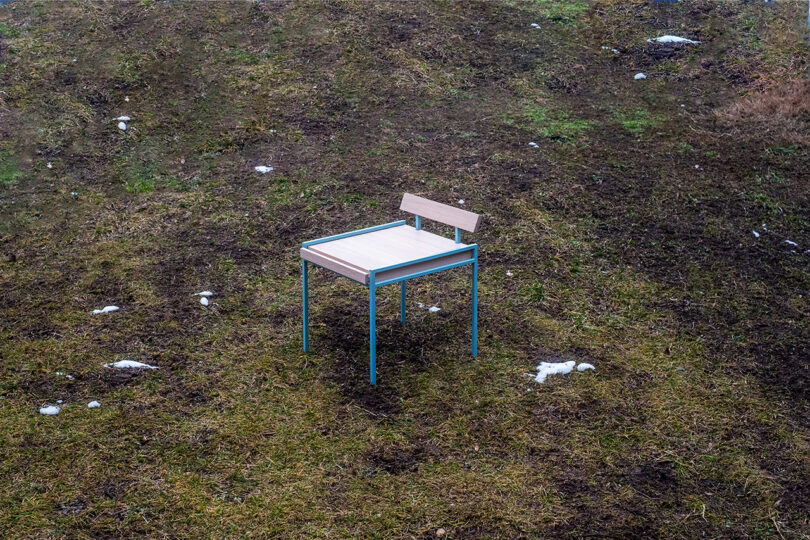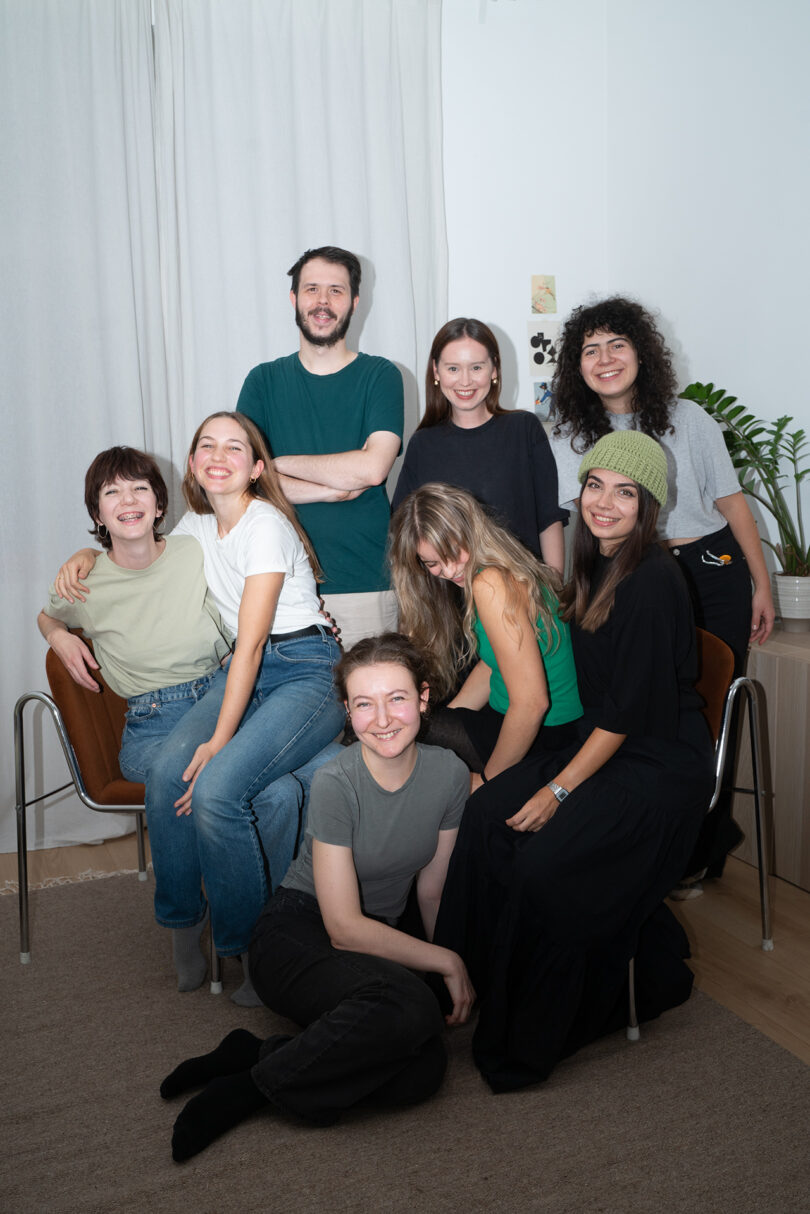MAIII Collective, which recently debuted their first collection at the Stockholm Furniture Fair, offers a cohesive and layered take on Central and Eastern European identity. “Context is crucial. When you share the story behind an object, it adds another layer of meaning,” the collective explains. They present this collection of furniture and functional objects as a window, a chance to engage with histories different from our own – unique stories and heritage, details from the past only locals would know. They all come together in Fragments, exemplifying the work the collective plans in the future.
Comprising eight Hungarian designers, MAIII Collective emerged after meeting in a product design class at the Moholy-Nagy University of Art and Design, Budapest. Their goal revolves around collaboration, born out of late night conversations and a desire to communicate heritage through design. “As a fresh collective, we are still finding our way, learning how to balance our many ideas and experiences because (luckily) we are not few,” they share.
The members – Rebeka Csiby-Gindele, Viktória Dawson V., Eszter Hanko, Balázs Kisgyörgy, Flóra Lukovics, Blanka Tímári, Roberta Wende, and Zsófia Zala – bring their unique Hungarian background to this process, highlighting areas of culture otherwise largely undiscussed. They believe that objects carry weight far beyond their size, inspiring and connecting others through a universal language.
A cabinet with angular modules, Relikvia is a showcase not dissimilar to the one the Roberta Wende’s family had, but with a modern touch. Separate blocks of space leave exact room for cherished objects, no more, no less. This requires sensitivity and forethought in choosing which pieces inhabit their new homes.
Inspired by a birdhouse created by the designer’s grandfather fashioned out of a gas mask can, Odo, created by Balázs Kisgyörgy, features a solid wood top and a small opening, with a small perch for sunning outside. The overhang from the top is just enough to cover the perch, protecting both the birds and memories inside.
The Estebéd Serving Tray, designed by Zsófi Zala, is inspired by the warmth of dinner in the home. Presentation is important yet not essential when it comes to food, making it that much more special when it is thoughtfully done. Trays can be taken out and piled with nourishment, while the matching cups add thoughtfulness to the table.
Úzska, designed by Rebeka Csiby-Gindele, is a sustainable response to the inflatable donut, a completely wooden floatie for bobbing on top of the water. For the designer’s parents and grandparents, these were a nostalgic part of glittering sunlit summers in the water. Falling out of fashion for their plastic counterparts, this project directly challenges that norm, offering far more in terms of durability and craftsmanship.
Blanka Timári designed Suszter as a reimagined cobbler’s chair, inspired by her grandfather’s workshop that held endless amounts of scrap leather. The leathers were left over from the family’s shoemaking company, which now come together to form the stools’ patchwork seat. Each leather remnant is used as it was found, helping to preserve all of the stories that each piece holds.
An important Christmas tradition, honey, walnuts, and garlic are traditionally eaten to ensure a prosperous and happy new year. These three objects, Trio by Viktória Dawson V., include a honey dipper, walnut smasher, and garlic slicer, that are not only aesthetically pleasing, but can be used throughout the year as well as helpful household companions.
Designed by Flóra Lukovics, these ceramic vessels create Útravaló, a love letter to the care a grandmother puts into packing up a bit of dinner to take home. These ceramic vessels, with separate compartments for different foods, successfully elevates that process.
The intentionality of hiding and showing comes into play strongly with Eszter Hanko’s Rejlik Chair, inspired by the designer’s grandparent’s struggles under communism. The chair contains a secret drawer encased within the thin wooden seat, literally preserving memories in furniture for future generations to discover.
To learn more about Fragments by MAIII Collective, visit maiiicollective.com.
Photography by Aranka Csige.
